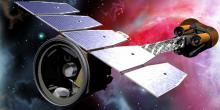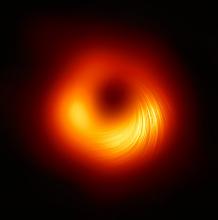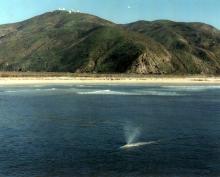Listen to today's episode of StarDate on the web the same day it airs in high-quality streaming audio without any extra ads or announcements. Choose a $8 one-month pass, or listen every day for a year for just $30.
You are here
Stellar Magnets
The Sun is like a bar magnet. And every 11 years, it flips upside down — the north and south magnetic poles change places. Most other stars are similar, with smaller stars much more magnetically active than bigger ones.
The Sun’s magnetic field is generated in its outer layer, the convective zone. Hot gases in this layer bubble up and down like a pot of boiling water. Those motions generate complex magnetic fields.
The gases in that layer rotate at different rates — gas near the equator moves around the Sun faster than gas near the poles. The gases at each latitude carry their own magnetic field. As they circle the Sun, the fields get pulled and twisted.
As that happens, lines of magnetic force punch through the surface of the Sun. That creates dark sunspots. The magnetic field also forms loops and ribbons above the surface, which pull out filaments of hot gas. And sometimes, lines of magnetic force tangle up, then snap. That creates eruptions known as solar flares.
The cycle peaks every 11 years. Around the time of the peak, the field flips over, then the Sun gets quieter — until it builds toward the next peak 11 years later.
Smaller stars are much more active than stars like the Sun. That’s because such a star’s convective zone extends down to its core, so there’s a lot more “boiling” action. Such stars produce many more flares than the Sun does, and the flares can be much more powerful — giant storms from little stars.
Script by Damond Benningfield






